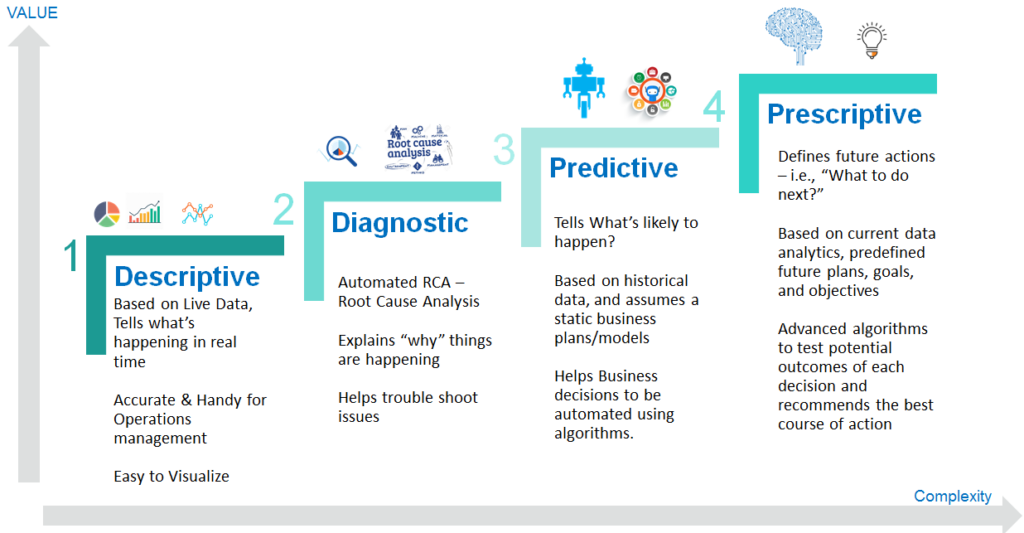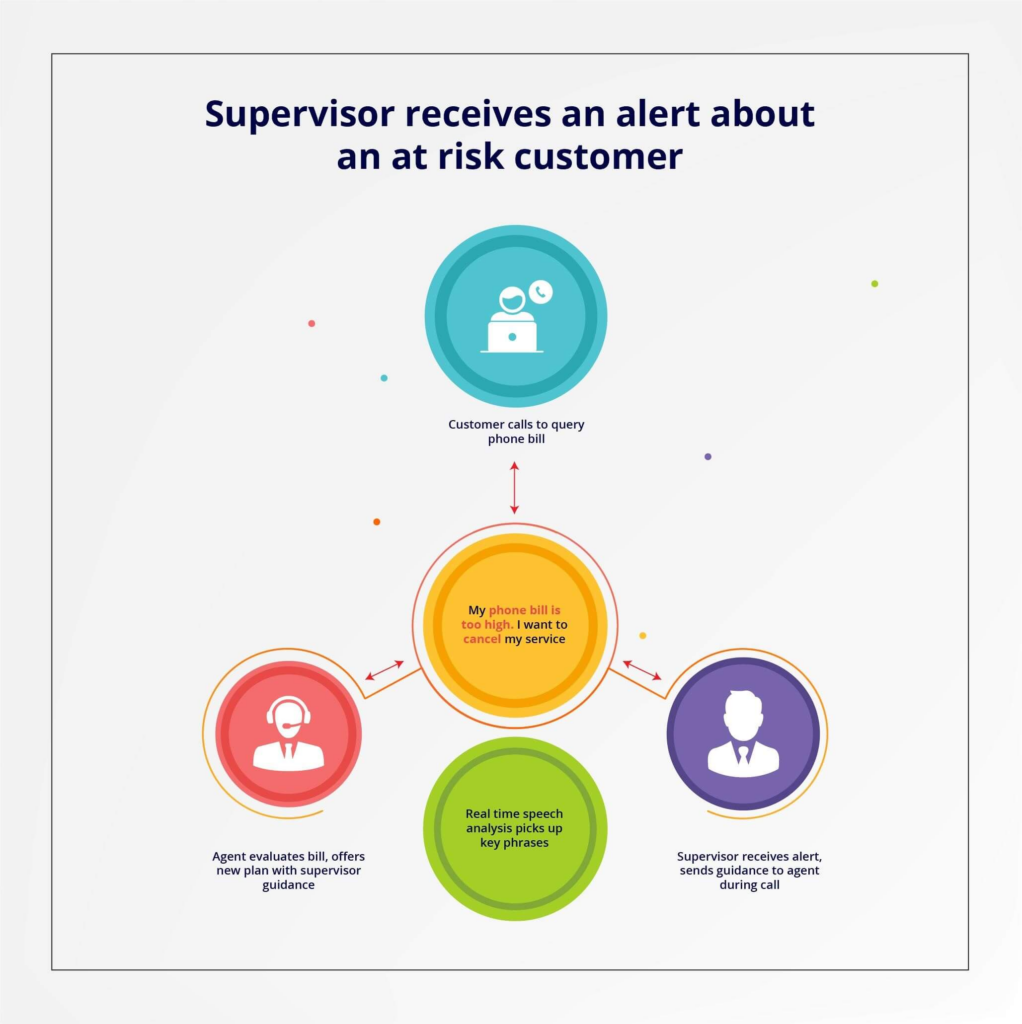Call centers play a crucial role in building strong customer relationships.
However, without the right analytics, call centers struggle to gain insights into call patterns, agent performance, and the overall customer experience.
This comprehensive guide will explore what call center analytics entails, the types of call center analytics and must-have analytics features.
With the powerful insights gleaned from properly analyzing call data, call centers can elevate the customer experience to new heights.

What Is Call Center Analytics?
Call center analytics refers to the practice of collecting, measuring, analyzing, and reporting on call center interactions and performance metrics.
It typically encompasses both quantitative metrics such as average handle time, as well as qualitative data like customer satisfaction scores.
The overarching goal is to extract meaningful and actionable insights from the wealth of data generated during customer interactions.
These insights enable call center managers to identify opportunities for improvement and make data-driven decisions.
Some examples of key performance indicators (KPIs) that call center analytics focuses on include:
- Call volume and traffic analysis
- The average speed of answer
- Abandonment rate
- Average handle time
- First-call resolution rates
- Call transfers
- Peak calling times/seasons
- Call escalation rates
- Customer satisfaction (CSAT) scores
- Agent utilization rates
- Revenue per call
By setting up automated reports on these KPIs, call center leaders can keep a pulse on operations, diagnose problem areas, measure agent productivity, and optimize the customer experience.
Advanced analytics techniques like speech analytics can also help reveal additional insights.
Types of Call Center Analytics
Call center analytics can be categorized into three main types:

1. Descriptive Analytics
Descriptive analytics focuses on using historical data to gain insights into what has happened. Key elements of descriptive call center analytics include:
- Performance dashboards provide real-time visibility into call volumes, wait times, abandonment rates, and other critical operational metrics.
- Historical reports revealing week-over-week, month-over-month, and year-over-year trends in call center KPIs.
- Call recordings and call transcriptions to evaluate customer conversations.
- Peer benchmarking to compare a call center’s performance to industry standards.
Descriptive analytics enables managers to monitor activity, identify issues, and understand the health of operations.
2. Diagnostic Analytics
While descriptive analytics focuses on “what” has happened, diagnostic analytics tries to determine “why” it happened. Examples include:
- Root cause analysis to pinpoint why calls are being abandoned or why customers are escalating calls.
- Call tagging and annotation to capture insights into customer needs and problems.
- Speech analytics and sentiment analysis to identify pain points in the customer journey.
- Evaluating interactions against quality assurance (QA) frameworks to diagnose areas of strength and weakness.
These techniques help call centers determine the underlying factors impacting KPIs, agent performance, and customer experience.
3. Predictive Analytics
Predictive analytics leverages data mining and modeling to determine probabilities of future outcomes. It can forecast:
- Call volumes and optimal staffing levels.
- Peak call times during the day, week, and seasonally.
- Customer churn risk based on interaction data.
- Cross-sell and upsell opportunities based on customer demographics and behavior.
- Areas of operations needing improvement before issues arise.
The goal is to enable call centers to take proactive measures to improve efficiency, service quality, and customer relationships over time.
Essential Analytics Features in a Call Center Software
Here are 5 essential analytics features in call center software:
1. Call Volume and Traffic Analysis
This allows call center managers to track call volume metrics like number of calls received per day, call spikes during certain times of day, average call durations, etc. This helps optimize staffing to handle call traffic efficiently.
Advanced software can track traffic sources like the number of calls per campaign, calls from new vs. repeat customers, geographic location of callers, etc. This helps identify trends and opportunities.
2. Service Level Adherence
Service level targets like 80% of calls answered in under 20 seconds are vital QoS metrics.
Call center software needs real-time dashboards to display service levels and alarms when thresholds are breached. Historical reports help identify problem periods.
3. Agent Performance Analytics
Crucial metrics like average handle time, adherence to schedules, call resolution rates, and customer satisfaction scores help managers identify top performers, as well as agents who need coaching.
This ensures optimal agent performance.
4. Customer Journey Analytics
Track each customer’s journey from initial call to issue resolution.
Analyze steps with long hold times, transfers, repeats, and drops to identify process bottlenecks. This helps optimize processes and improve customer experience.
5. Speech and Text Analytics
Convert calls into actionable data with speech-to-text software.
Analyze transcripts with text analytics to identify frequent customer complaints, agent knowledge gaps, and opportunity areas to improve service.
Why is Call Center Analytics Important?
1. Improves Call Center Performance
Call center analytics can track key performance indicators like call volume, call wait times, agent utilization, etc. This allows managers to identify trends and areas for improvement.
2. Enhances Customer Experience
By analyzing call interactions, companies can identify common pain points or issues customers face.
This enables them to proactively resolve them through better training or modifying call flows.
3. Optimizes Staffing and Schedules
Historical and real-time analytics on call volumes and patterns allow call centers to better forecast needs and staff appropriately during peak and non-peak periods. This improves service levels and reduces idle time.
4. Drives Productivity and Efficiency
Analytics provides insights into average handle time, after-call work time, adherence to schedules, etc. This allows managers to coach agents and implement processes to boost productivity.
5. Improves Agent Performance
Individual agent metrics around courtesy, knowledge, resolution rates, sales conversions, etc. can be tracked. This enables focused coaching and training of agents.
6. Increases Revenue and Sales
Analytics tracks lead generation rates, up-sell/cross-sell opportunities converted, revenue earned per call, etc. This helps identify high-performing agents and shape sales processes.
7. Enhances Compliance Monitoring
Interaction analytics helps ensure adherence to regulations around consent, disclosure, scripting, etc. in sensitive sectors like banking and healthcare.
8. Provides Business Intelligence
Call analytics integrated with CRM and other systems provides a comprehensive view of customer interactions and needs. This is invaluable for segmenting, targeting, marketing, and enhancing the customer experience.
Overall, call center analytics is a vital tool to drive performance, efficiency, compliance, and revenue for call centers. Investing in analytics solutions and training staff to use them effectively provides significant ROI.

How Does Call Center Analytics Impact Customer Experience?
1. Reduced Wait Times
Leveraging analytics helps call centers reduce customer wait times in multiple ways. Historical call volume analysis enables managers to accurately forecast staffing needs during peak periods to minimize queues.
Real-time service level monitoring with threshold alarms ensures calls are answered quickly, reducing abandonment rates.
Analytics also facilitates optimized IVR routing and skills-based call routing to get customers to the right agents efficiently, reducing hold times.
2. First Call Resolution
Several analytics approaches help improve first-call resolution rates. Agent performance metrics identify knowledge or skill gaps that can be addressed through targeted training to resolve more customer issues on the first interaction.
Speech analytics helps spot recurring customer pain points and topics where agents lack expertise, signaling areas for training.
Customer journey analytics helps streamline processes by removing ineffective transfers and getting customers the information they need faster.
3. Personalized Service
Analytics enhances personalization by giving agents a 360-degree customer view via CRM integration.
Text analytics leverages voice-of-the-customer data to tailor service to specific customer needs.
Predictive analytics empowers proactive outreach to high-value customers. Sentiment analysis spots opportunities to impress customers with more customized service.
4. Continuous Improvement
Ongoing feedback analysis helps identify areas needing improvement. Regular evaluation of call center analytics KPIs spots negative trends early for course correction.
Analytics provides data-driven insights to guide initiatives to enhance customer satisfaction over time. The insights are constantly optimized based on the latest interactions.
5. Omni-channel Experience
Unified analytics covering channels like voice, email, social media, chat, and SMS provide complete customer insights.
This enables delivering consistent personalized service across channels.
Customer journey analytics provides visibility into seamless transitions between channels. Analytics helps optimize the omni-channel experience.
Conclusion
Deploying call center analytics helps uncover the tremendous value hidden within customer interaction data.
By enabling data-driven decisions, call centers can achieve significant operational efficiencies, cost reductions, and customer experience improvements.
However, success hinges on having the right analytics tools and capabilities. Modern solutions make it possible for all call centers to leverage analytics, transform into insight-driven operations, and excel in the digital age.
Frequently Asked Questions (FAQ)
Ques 1: What are the key KPIs used in call center analytics?
Ans: Some of the most important KPIs tracked through call center analytics include: average speed of answer, abandonment rate, average handle time, first call resolution rate, customer satisfaction scores, call transfer rate, agent utilization rate, and service level.
Tracking these metrics enables managers to gauge operational efficiency, staffing needs, and overall customer experience.
Ques 2: How much call center data should be analyzed?
Ans: Ideally, call centers should analyze 100% of their customer interaction data rather than small samples.
Technology makes this possible by automatically recording all calls, integrating data from multiple channels, and enabling analysis of both quantitative and qualitative data through speech analytics. This provides the most comprehensive insights.
Ques 3: How quickly can you implement call center analytics?
Ans: The best call center software platforms have built-in analytics, enabling centers to access ready-made dashboards and reports from day one of implementation.
Additional integrations, customizations, and advanced analytics capabilities can be layered on incrementally. With the right solution, powerful analytics can be up and running within weeks.
Ques 4: What skills do analysts need for call center analytics?
Ans: Call center analysts require a mix of skills – strong quantitative abilities to work with large datasets, communication skills to translate insights into actionable recommendations, and problem-solving skills to know which questions to ask of the data.
Look for analysts with SQL, Excel, statistical analysis, and data visualization competencies.
Ques 5: How can speech analytics improve call monitoring?
Ans: Speech analytics applies AI to automatically transcribe calls, analyze texts for keywords, categorize calls, and detect emotions and sentiment.
This provides much richer insights compared to just listening to call recordings. The benefits include better evaluation of agent soft skills and improved monitoring of compliance, security, and service quality.






